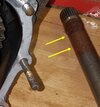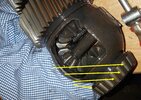Whats the best technique to drive through a flooded road?
Also, how deep is too deep when it comes to driving through?
of course, it depends on the type of vehicle you have... let's just say a typical ford focus family car for this hypothetical scenario
Also, how deep is too deep when it comes to driving through?
of course, it depends on the type of vehicle you have... let's just say a typical ford focus family car for this hypothetical scenario




